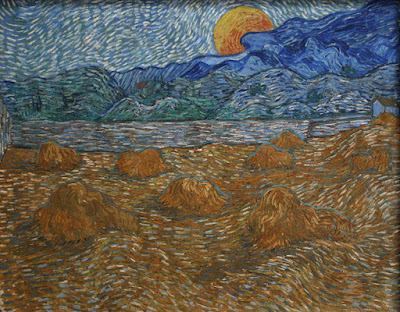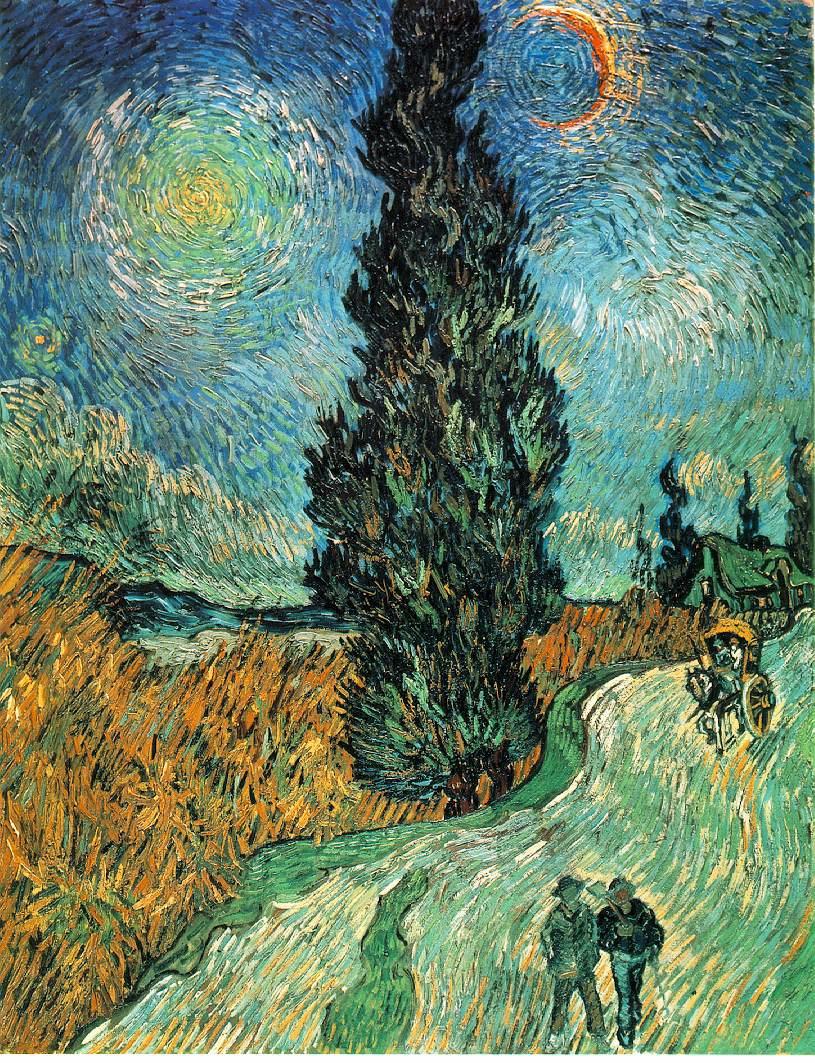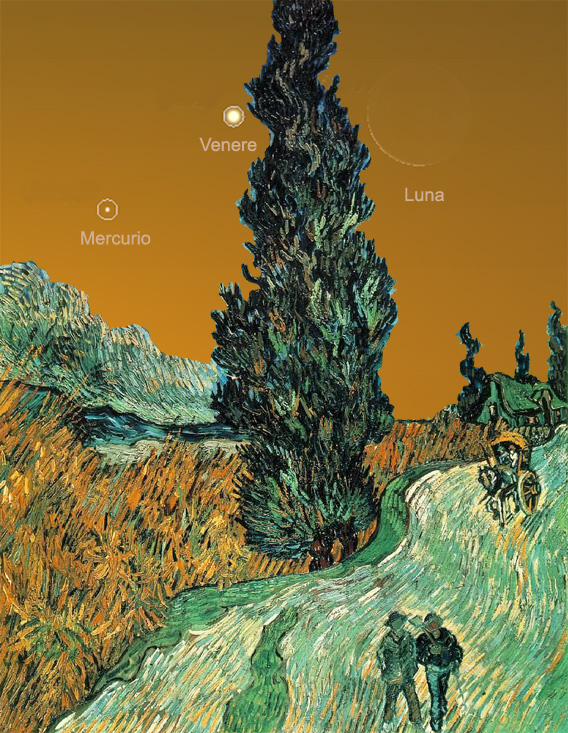
«... watching the stars always makes me dream, as does the black dots that represent cities and villages on a map. Why, I wonder, the bright points of the sky cannot be as accessible as those on the map of France? " with these words Vincent Van Gogh turned to his brother Theo in one of the letters; the "luminous dots" that the painter would like even more accessible, are the trait d'union between the past and the present, between the desires of an artist and a fascinating scientific research ...
In 1888 the dutch painter was in the city of Arles, where he would soon meet Paul Gauguin. Between the shores of the Rhone river discovered a suitable point to represent a subject: Starry night on the Rhone. Happy to have started a new job he writes: «I am working [...] on a study of the Rhone, the city illuminated by gas lamps reflected in the blue river. Above the starry sky with Big Dipper, a sparkle of pink and green on the cobalt blue field of the starry sky, where the lights of the city and its cruel reflections are red gold and bronze green...» Recently the italian astronomer Gianluca Masi, he carried out an accurate study that allowed him to reconstruct the time and date (the latter still too uncertain) of the execution of the work. Thanks to the Big Dipper, depicted above the lights of the city, Masi discovered that in the painting the constellation appears deformed: this detail suggests a pause of at least forty minutes in the execution of the work, as the night sky changed with the passing of the time; the painter probably dedicated himself to something else, and then resumed his work and "mistakenly" fixed the remaining stars in a different position. He therefore estimated the execution of the painting on a night between 20 and 30 September 1888 at 22:30. To this detail is also added the discovery of a license, that having depicted the constellation in a different point from the real one, that is, in the south-west direction rather than in the north.
 |
| The starry night on the Rhone on 25th September 1888 at 22:30 |
The following year Van Gogh is in Saint-Rémy-de-Provence, also in the south of France. Having volunteered at a psychiatric clinic, he paints one of his most famous paintings, Starry night, where he immortalize Saint-Rémy and the Alpilles in the background; the sky is represented with swirling movements of color: perhaps a tribute to the Vortex Galaxy M51 designed by Lord Rosse in 1845 with the largest telescope of the period? Regarding the execution of the painting then the painter writes: "... as if the sky, passing through its yellows and its blues, become a radiating light in motion to incite a panic fear to humans who feel the mystery of nature." Among the yellows and blues of the firmament one can easily identify the moon at the last quarter, a white star near the tree in the foreground (Venus) and the constellation of the fish. Thanks to an astronomical software the date of execution of the work was identified in the hours before the dawn of May 23th, 1889, in fact, if you compare the arrangement of celestial bodies, the phase and the height of the moon you realize that the heaven is the same.
 |
 |
| Comparison between the Starry Night and the dawn of May 23th, 1889 | |
With the same principle, the Texan staff of Donald Olson studied the paint Rising Moon some years ago. In it the campaign of Saint-Rémy appears in the foreground, and in the background the full moon rising on the Alpilles. The position of the moon had two dates of execution deduced: May 16th and July 13th. Olson deduced from the sheaves of wheat represented in the picture that the second date was the most certain: the work was in fact represented at 21:08 of July 13th 1889.
 |
 |
| The rising moon and the sky of July 13th 1889 at 21:08 | |
In Road with Cypresses and Starry Sky Van Gogh painted an alignment of planets identified in 1988 by Donald Olson. In the sky a cypress stands out and in the background two bright dots appear in the company of the Moon. He managed to identify the planets Mercury and Venus clearly visible at sunset during that period; what the painter represented, therefore, is a conjunction of planets that took place on April 20th 1890 between 7 pm and 8 pm.
 |
 |
| The road with cypresses and starry sky and the sunset of April 20th 1890 | |
The composition was one of the last performed in Saint Remy, since a month later he would move to Auvers-sur-Oise thirty kilometers from Paris. Here he painted a white house that once again attracted the attention of Olson's staff. On this work Van Gogh writes: «... a white house in the vegetation with a star in the night sky and an orange light on the windows [...] and a note of bleak pink.» This painting is in fact called White House at night, where high above the light of Venus that allowed Olson to date the work on June 16th 1890 hours 20, six weeks before the suicide of the Dutch artist.
 |
 |
| The White House at night and the sunset sky of June 16th 1890 | |
These discoveries, which took place a century after his death, undoubtedly revealed the temporal instant of some works, as well as the value of a hue, a graphic sign or a contrast in color; nevertheless we will never be able to unveil the reason that pushed Van Gogh to represent on canvas those "luminous dots" engraved, just like on a geographical map in the sky.
Questo commento è stato eliminato da un amministratore del blog.
RispondiElimina